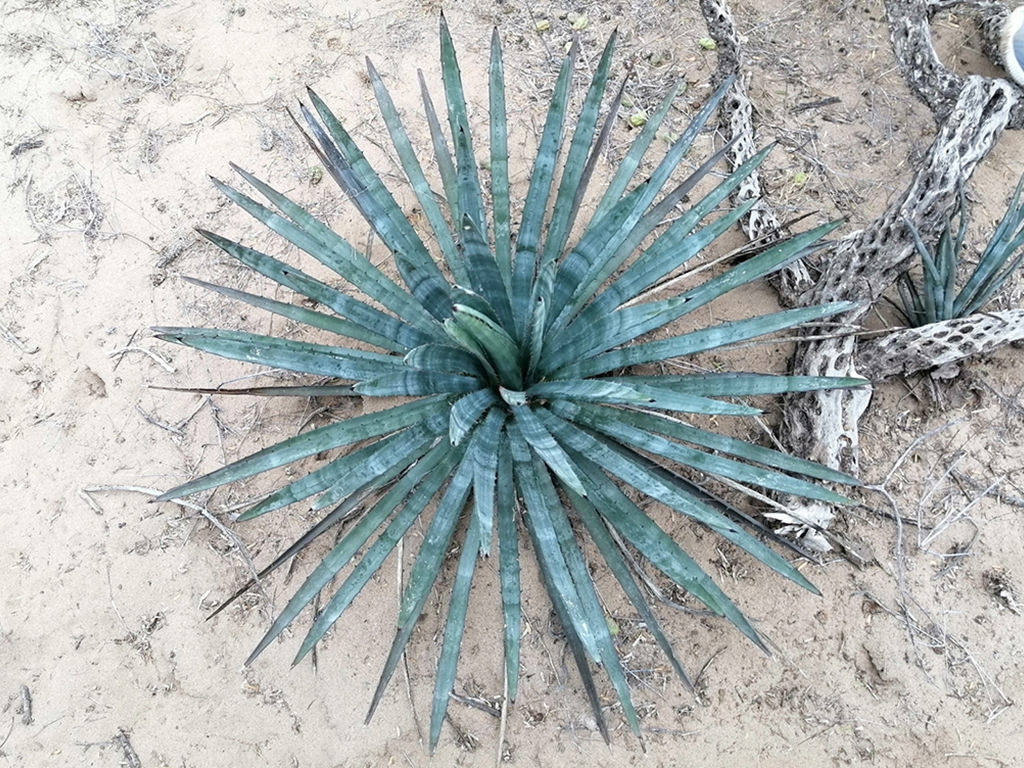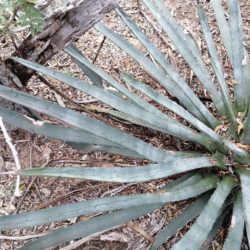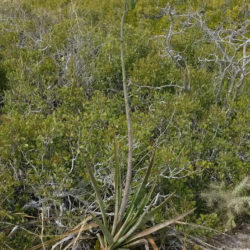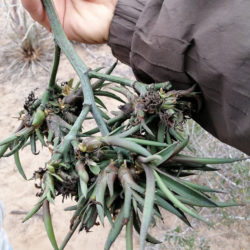Scientific Name
Agave aktites Gentry
Common Name(s)
Coastal Agave, Sand Dunes Agave
Scientific Classification
Family: Asparagaceae
Subfamily: Agavoideae
Genus: Agave
Origin
This species is native to Mexico. It is known only from the coast of northwestern Sinaloa and northwestern Sonora, where it grows on dunes and in coastal thorn forests.
Description
Agave aktites is a rare succulent plant that forms rosettes of linear bluish glaucous gray leaves with short brown spines along the margins and a long terminal spine. The rosettes grow up to 28 inches (70 cm) tall and 44 inches (1.1 m) in diameter. Leaves are up to 24 inches (60 cm) long and 1.2 inches (3 cm) wide. After several years of growth, the rosettes send up an erect, up to 13 feet (4 m) tall stalk with clusters of many greenish-yellow flowers in late winter or early spring. The rosette dies after flowering but usually produces offsets during its lifetime and bulbils on the flower stem, so this plant will continue to grow.
Etymology
The specific epithet "aktites (ak-TY-tees)" is an Ancient Greek noun meaning "coast dweller" and refers to the habitat of the species.

How to Grow and Care for Agave aktites
Light: Like all Agaves, this plant requires full sun to partial shade. If growing A. aktites indoors, choose a bright, sunny window with as much sun as possible. From spring to fall, it loves going outside.
Soil: A. aktites will tolerate most soils as long as they have good drainage, but its preference is sandy or rocky soil.
Hardiness: During the growing season, it likes warm temperatures, while in winter, when resting, this succulent enjoys cooler temperatures. A. aktites can withstand temperatures as low as 25 to 50 °F (-3.9 to 10 °C), USDA hardiness zones 9b to 11b.
Watering: From spring to fall, water thoroughly when the soil becomes dry. In winter, water sparingly about once a month. Plants in containers require more frequent watering than those in the ground.
Fertilizing: Give your A. aktites a small amount of fertilizer in the spring during the first two years. After that, established plants seem to take care of themselves.
Repotting: If you notice your A. aktites becoming pot-bound, repot it with fresh soil in a new pot slightly larger than the old one. Give the plant a week or so to readjust before you water it again.
Propagation: Since it can take years to produce seeds, A. aktites is usually propagated by offsets. The best time to remove the offsets is in spring and summer. Sow the seeds in spring.
Learn more at How to Grow and Care for Agave.
Toxicity of Agave aktites
A. aktites is not toxic to humans but may be mildly poisonous to children and pets.
Links
- Back to genus Agave
- Succupedia: Browse succulents by Scientific Name, Common Name, Genus, Family, USDA Hardiness Zone, Origin, or cacti by Genus
Photo Gallery
Click on a photo to see a larger version.


